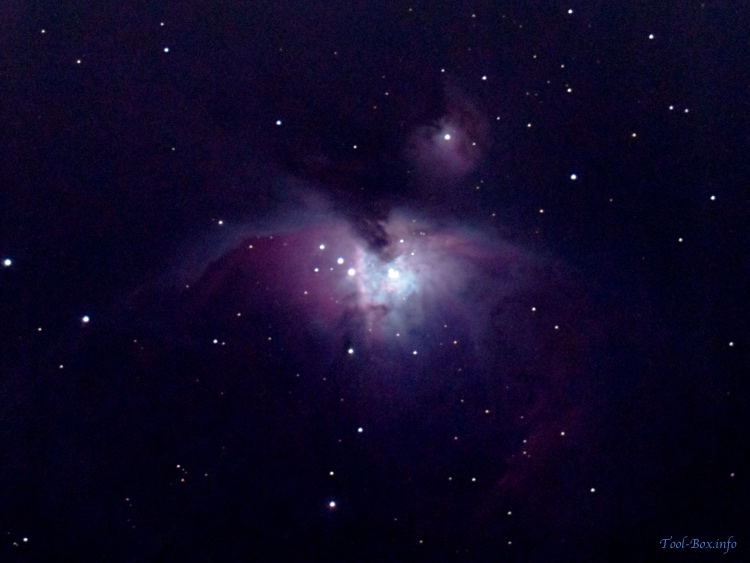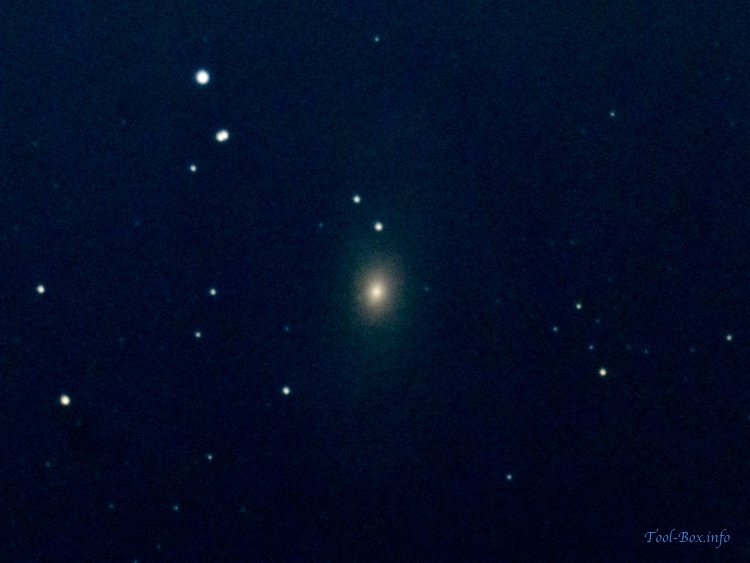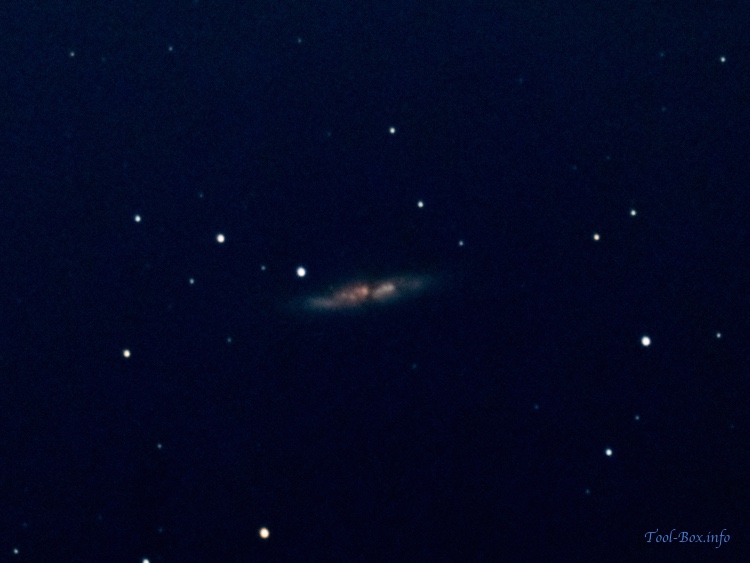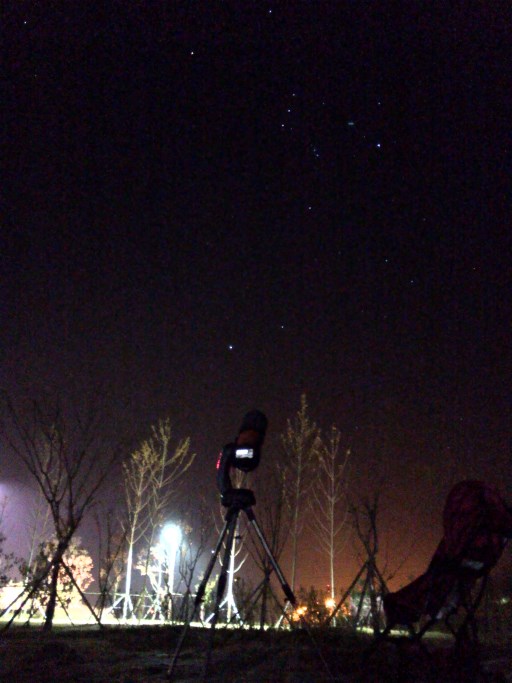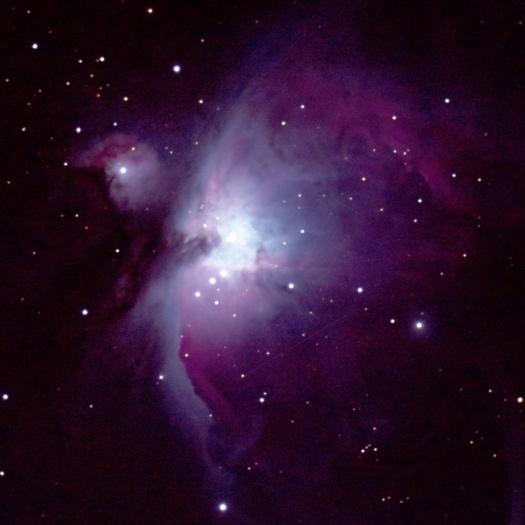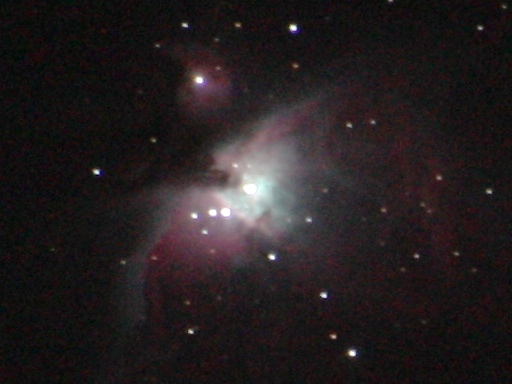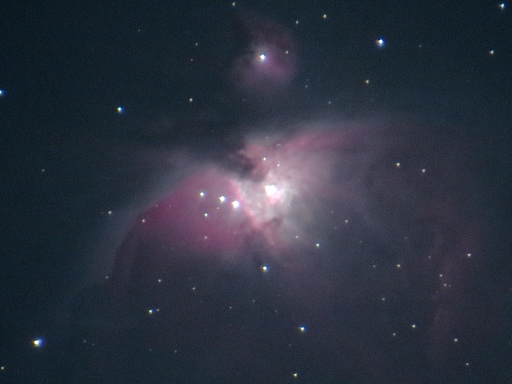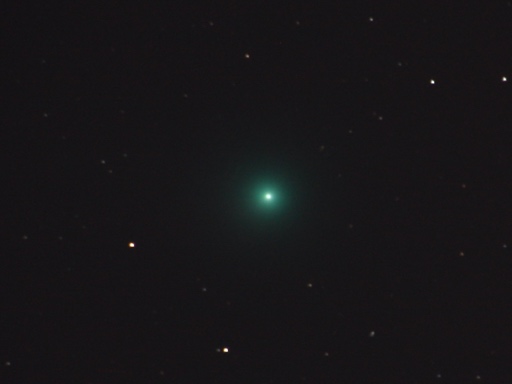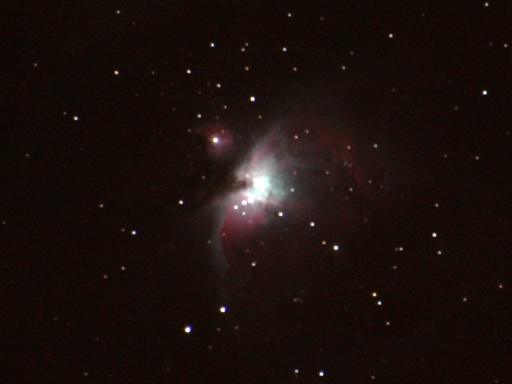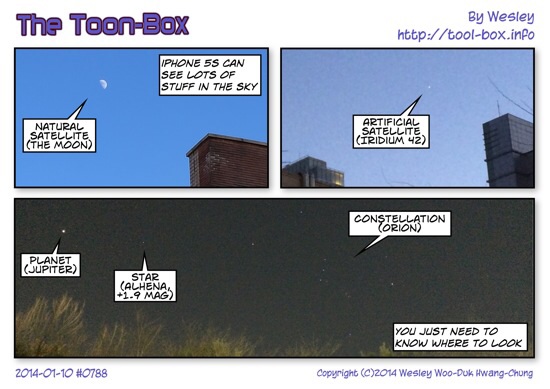Nebulas and galaxies in the spring sky
Posted by Wesley onI haven't taken a look at nebulas and galaxies in several years - the last time I did so was back in November 2015. With the clear evening skies persisting for a few days, I thought that it was a good time to make a return observation. The easiest, and thus the first target was the bright Orion Nebula. I first made several attempts with my iPhone X, but it did not yield the level of quality I wanted and switched to Sony A5000 for the result above. As it was April, the nebula was heading towards the horizon in the southwestern sky and thus subject to less than dark background and drowning out darker portions.
Moving to the northern sky, I took a look at something I haven't checked out since moving to Naju - the Bode's Galaxy and the Cigar Galaxy. I last saw them in May 2014 in Suwon. Due to the worsening light pollution I can't say I had better observation conditions, but I did have better equipment now. And the results speak of this advantage, as the galaxies were captured in finer detail. I especially like how the variation of brightness appears in the Cigar Galaxy below.
Telescope: Celestron NexStar 6SE + f/6.3 focal reducer
Device: Sony A5000 (prime focus)
Settings: (945mm) - ISO 1000(#1) / 2500(#2) / 3200(#3) - 30s - (f/6.3)
Filters: None
Time: 2018-04-09 20:23-20:38(#1) / 22:27-22:40(#2) / 22:49-23:10(#3) KST
Location: Naju, Korea
5(#1) / 10(#2) / 13(#3) photos stacked with Deep Sky Stacker 3.3.4
Defined tags for this entry: astronomy, Bode’s Galaxy, camera, Celestron NexStar 6SE, Cigar Galaxy, galaxy, nebula, Orion, Sony A5000, star
